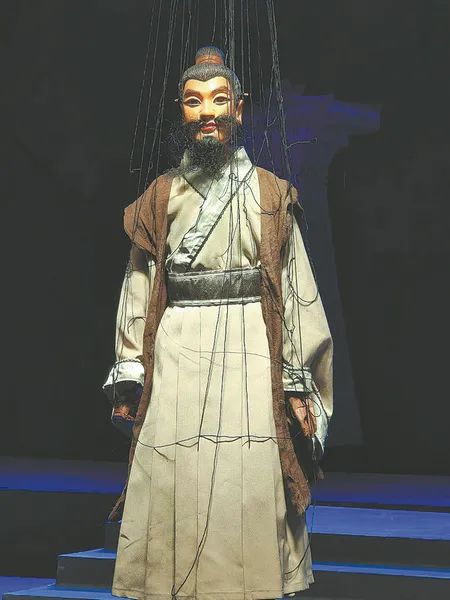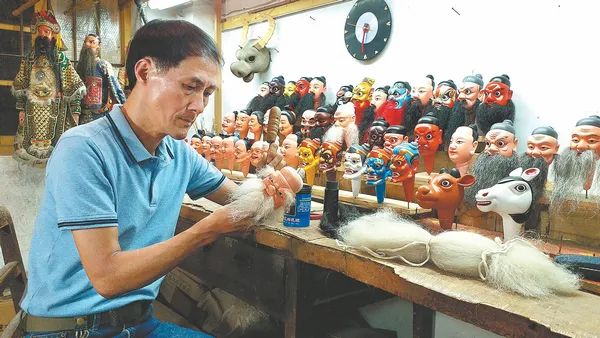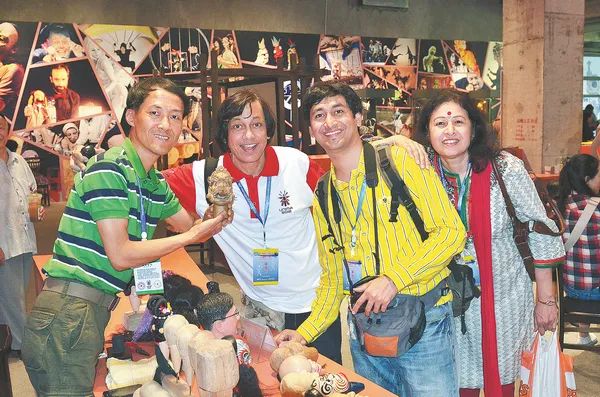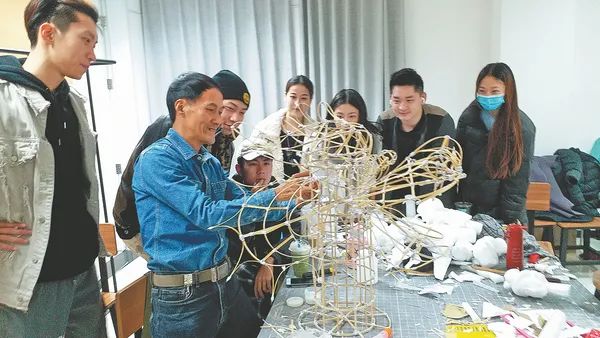The rhythmic sound of wood being drilled often piques the curiosity of visitors when they step into the Quanzhou Puppetry Theater. As they seek the origin of the sound, they will find Lin Congpeng toiling away at his work bench under a reading lamp.

▲ Lin Congpeng's puppets range from historical figures to folk opera characters. CHINA DAILY
Over the past few months, Lin has been busy creating a series of puppets for a major new 30-hour show.

▲ Lin Congpeng's puppets range from historical figures to folk opera characters. CHINA DAILY
To ensure timely delivery, Lin has put in many extra hours.
Some of his works have been in use for decades and are still as good as new."With proper care, a puppet head can last for a hundred years," he saysThe process of making puppet heads is different from wood carving, which usually involves fixing the wood and chiseling it bit by bit."But making puppet heads involves shaving the wood from start to finish, with the image and profile of the character already in mind," Lin says.The challenge lies in achieving the desired shape."Every stroke of the knife needs to be slow and precise, as it is an art of meticulous reduction. If one eye is carved crooked, the entire work is ruined," he says.In 1978, Lin signed himself up for a puppetry program at a local art school, where he not only continued to hone his skills systematically, but also learned about performance of the art.After completing the basic form of the puppet, a mechanical mechanism is installed.Makeup will then be applied, with eyebrows and eyes carefully outlined."Only then can it appear natural, lively and animated," Lin says.As a puppet head sculptor, Lin has not only inherited the traditional craftsmanship, but also constantly innovates to meet the aesthetic needs of modern audiences."Traditional puppets usually only have soft hair, which didn't quite match the image of a Westerner," he explains.Over the years, he has often walked into the theaters to observe the audience's reactions to different puppets, in order to keep track of the subtle changes of public taste for the traditional show.In the past, artists had to carry out the process more than a dozen times to paint the puppets with mineral pigments."Now, we can just use a brush to lay the foundation and use a spray gun to apply paint, allowing it to dry faster," he says."The colors are brighter, smoother and more delicate than in the past, and they are also more in line with modern stage aesthetics."





